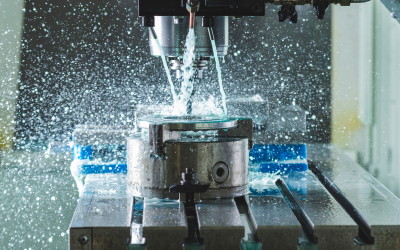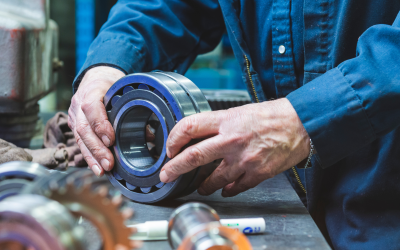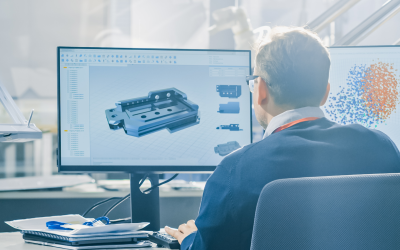Manufacturing is an industry that carries a perception of high risk, because there are so many variables, sometimes, we can’t control the costs of. This makes those with manufacturing needs, and even those who may already be manufacturing feel uneasy about high upfront costs.
For a beginner, some costs in manufacturing are easy to connect the dots with: it takes a lot of care, concentration, and creativity to get the right design, for example, and a relatively brief discussion will clear any confusion around material costs.
But in the general chain of design, prototype, tooling, and manufacture, one item stands out like an alien artefact on an uncharted planet: tooling.
What is Tooling?
Simply put, tooling is the machine that will make your product. Tooling is what makes high volume production at low part cost possible.
If your product or parts of it are plastic, the tool will be an injection mould. If it contains stamped sheet metal, you will need a press tool. Bottles, bags, bobby pins and anything else you can think of all need their own tooling.
We will focus on injection moulding here as it is the most common process associated with consumer and industrial parts, however almost all tooling setups share the same investment/part cost relationship.
Thinking about tooling means thinking about how your budget can accommodate tooling…and this is where misconceptions thrive.
A Bad Part Can Blame Its Tools
When crunching the numbers, it’s easy to look at the budget required for tooling and try to shrink it – after all, it’s the final part that matters, not how you get there, right?
But this logic ignores the fundamental principles of injection moulding – and the financially beneficial long game of an investment in tooling.
Injection moulding is entirely based on the concept of making an investment in the tool and gaining a payoff in very cheap parts which you can mark up dramatically on a per unit basis. To go against this premise is to ignore the primary driver for going with plastic in the first place.
As the pre-eminent method of mass production, injection moulding is fast, repeatable, reliable, and well-insulated from cost fluctuations, as its feed stock material – plastic – is common as dirt. As a result, parts will basically always be dirt cheap.
But gaining a competitive edge means finding a way to ensure that these cheap parts are of high enough quality to justify a substantial mark up, and can be produced quickly with minimal to no errors – and it just so happens that the best way to address all these requirements is through a high-quality tool.
Consequently, investing in the tool is one of the most crucial steps to successful mass production –the larger and more thoughtfully built the tool is, the cheaper the final part.
It boils down to this: larger tools are more costly to both make and run, but because they make more parts at once, the resulting unit cost is always cheaper.
This is particularly true of complex plastic parts, such as those with features requiring sliding or rotating elements inside the cavity, or final parts that are constructed of a “family” of smaller parts all moulded together.
Investing in advanced tooling can also generate a return in ways other than pushing down the final part cost. Our clients often face the choice of making a few simple parts to do the job, or one complex part. Complex parts need a complex mould, but if we can reduce running costs such as the assembly or transport associated with having many bits and pieces in the supply chain, then the initial investment can be returned many times over.
A GOOD TOOL IS A GAME-DAY PLAYER THAT COSTS LESS IN THE LONG RUN.
It seems obvious, but over its lifespan, an injection moulding tool will have a lot of hot, high pressure plastic run through it. A lot.
Investing extra in a tool is essentially a means of safeguarding against the punishment it is about to receive. By putting more of your budget into the tool, you are investing in higher quality materials and preparation processes that make the tool easier to repair and extend its working life.
Our tools, for example, are made to last a minimum of one million shots (yes, seriously).
Going for a cut rate tool will get it built cheaper but this will come at the cost of a severely limited life. Worse, as a cheap tool will come with no guarantees, forward planning around tool maintenance costs is really a shot in the dark. All you know is it will break some time, and you will have to bear the cost or cease production.
What to Do When It’s Tool Time for You
When your part is ready to hit the market and you’d like to determine the best course of action for your tooling, then all you need is that golden, elusive thing: open, honest communication. Establish a dialogue with your manufacturer about your budget and your goals:
• If you want to make a part for sale, you need to explain what the end part needs to cost. That decision can drive the entire design, tool design and moulding chain – and result in getting something with long-term viability out of your investment.
• If you are making a part for incorporation into existing manufacturing, you need to communicate how much cheaper/faster/better that end product needs to be with the moulded part in it. From this, a good manufacturer can investigate the entire chain and make the adjustments to achieve that.
More expensive tools permit the manufacture of more complex, higher quality, or just plain better looking parts. The best way forward is to know what you want to achieve – so if you’re about to head into tooling, start thinking about what your part is for, what your end goal is, and how you can communicate this with your manufacturer.





0 Comments